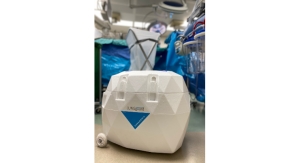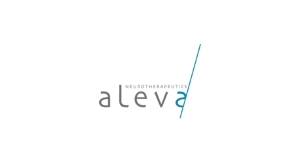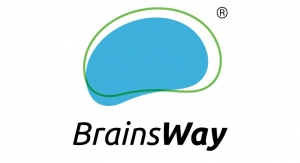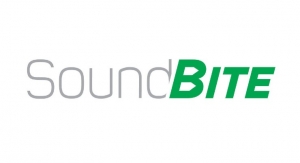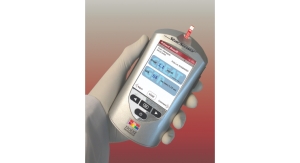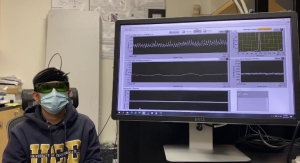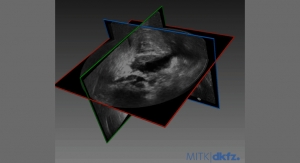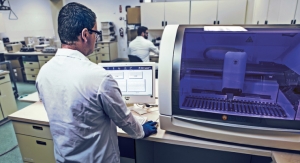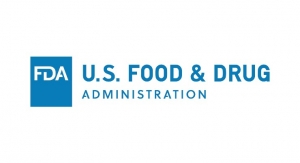Douglas Portnow, Principal, Schwegman Lundberg & Woessner, P.A.07.21.20
Marking your products with the relevant U.S. patents that cover the products is referred to as patent marking. Proper patent marking serves as legal notice to an infringer, thereby allowing a patent owner to potentially sue an infringer and demonstrate earlier infringement, thereby obtaining higher monetary damages in a patent infringement lawsuit. Care and attention must be given to accurately marking products since improper patent marking potentially opens a manufacturer up to liability for false marking if there is deceptive intent. Therefore, manufacturers should have an active patent marking program that aids in deterring infringement while minimizing potential liability for false marking. This is especially true in the case of highly litigious industries such as the medical device space.
Patent Marking Law
Just like federally registered copyrights that have the © mark or a federally registered trademark symbol ®, patents have their own set of marking rules for indicating intellectual property protection. While patent marking is not required in the U.S., failure to do so can reduce monetary damages awarded in patent infringement lawsuits. Patent marking laws encourage patent owners to give notice to the public that their products are patented, and this can help reduce accidental infringement by competitors who otherwise might not be aware of the patents protecting those products.
These objectives are achieved because typically, when a patent owner sues a patent infringer, monetary damages are only calculated based on infringing activity that occurred after the infringer receives actual notice of the infringement from the patent owner. Therefore, it is possible that infringing activity may have occurred for a long period of time before the patent owner found out about the offending activity and gave notice to the infringer (such as with a warning letter, a cease and desist, or an actual lawsuit filed with a court), and therefore monetary damages could be very small and unfair to the patent owner. Congress has addressed this unfair situation. U.S. patent law outlines the requirements for proper patent marking, which then serves as constructive notice to the public that a product is protected by one or more patents without having actual knowledge of the patents, and this legally acts as a substitute for actual notice.1 Therefore, monetary damages may be calculated for infringing activity by calculating damages based on the earlier constructive notice date rather than the actual notice date, thereby potentially increasing monetary awards in patent infringement lawsuits.
Higher damages in turn deter infringement. For this reason, manufacturers should have an active program of patent marking as a deterrent against infringement. Manufacturers should also consider marking product destined for sales outside the U.S. with relevant foreign patents. Of course, each country has its own laws regarding patent marking so check with local counsel for best practices outside of the U.S.
How to Mark Your Products
Simply marking a product with the phrase “Patent Pending” is generally insufficient to qualify as constructive notice and the only effect is to hype up a product. In the U.S., proper marking requires a manufacturer to mark the patented product with the word “Patent” or abbreviation “Pat.” followed by a listing of the applicable patent numbers. The marking should not be concealed, and it should be easy to read. If the actual marking is subject to wear, placement of the marking may be adjusted to accommodate for the situation. Further, all the patented products must be marked, not just a select few.
Patents that only contain method or process claims applicable to the product need not be marked on the product; this offers both advantages and disadvantages. For example, omitting applicable method patent markings on products may help the manufacturer keep those patents less visible or “under the radar,” even though skilled patent counsel should be able to find those patents with reasonable effort. On the other hand, failing to mark products with the method or patents does not provide constructive notice to infringers and, therefore, the potential decrease in monetary damages comes into play. In situations where the patent has both method and device claims, there is some disagreement by the courts; however, if only the method claims are going to be asserted against an infringer, patent marking is probably not required. If the device claims are going to be asserted, patent marking is appropriate.
In certain situations, the product may not be suitable for marking (e.g., due to wear or size constraints, or, in the case of a method, there is nothing physical to mark) and, therefore, marking the product packaging or labeling may be an acceptable substitute. However, simply marking product packaging solely due to convenience or marking product literature that does not accompany the product may not satisfy the requirement for constructive notice.
Physically marking the product, packaging, or labeling can be challenging since the listing of patents must be updated from time to time to remove expired patents or add new ones. This can involve significant tooling changes or reprinting costs and require scrapping of old packaging and labeling inventory.
In order to address these challenges, recent changes in U.S. law now also permit virtual patent marking where the product is marked with a website address that can be easily accessed and provides a listing of the relevant patent numbers. Virtual marking allows the manufacturer to easily update the schedule of different products and the corresponding patents that cover those products. Examples of medical device manufacturers using websites for virtual patent marking are listed in references two and three at the end of the article. Virtual marking is accomplished by marking the product with the word “Patent” or abbreviation “Pat.” followed by the website address.
Patent marking is not limited to just the original equipment manufacturer (OEM). Licensees of the patent or contract manufacturers should similarly comply with patent marking requirements for products they produce. Patent marking requirements should be reflected in the patent license or other contracts.
False Patent Marking
Marking a product with a patent that does not cover the product can create liability for the patent owner for false marking.4 Other examples of false marking include marking a product with a patent number without consent of the patent owner, using a patent number on an unpatented product, or marking a product with the phrase “Patent Pending” when there is no patent pending. Therefore, ensure the marking—whether on the product, packaging, labeling, or website—is accurate and the patents cover those products. Marking a product with an expired patent is no longer considered false marking under current patent laws, however, about 10 years ago, a wave of qui tam lawsuits were filed against manufacturers for allegedly falsely marking their products with expired patents. Qui tam suits (sometimes referred to as whistleblower suits) permit a citizen to file a lawsuit on behalf of the U.S. government with any monetary damages awarded split between the citizen bringing the lawsuit and the U.S. government. In a well-publicized lawsuit, Solo Cup (the manufacturer of the iconic red plastic party cup) was sued for falsely marking 21 billion cup lids with expired patents.5 The citizen asserted each falsely marked lid was an offense of false marking and since statutory damages were based on each offense, the citizen who filed the lawsuit argued for damages in excess of $10 trillion (the entire U.S. economy in 2020 is estimated to be about $22 trillion). The courts eventually found no violation of patent marking laws and Solo Cup avoided being penalized. Fortunately, this abuse of the patent marking laws was curbed as Congress revised the law in 2011 to omit expired patents as an example of false marking. False marking lawsuits can no longer be filed by ordinary citizens and only the government is permitted to pursue these suits. False marking suits have significantly dropped since then.
Nevertheless, products, packaging, or labeling should be reviewed from time to time to ensure expired patents are removed, new patents are included, and any patents listed do in fact cover the marked products. Having a routine audit program in place to monitor and update patent marking may help a manufacturer demonstrate it did not have intent (a requirement for proving false marking) to falsely deceive the public. Virtual marking provides an easy way of updating product marking without having to change mold tooling or packaging and labeling. However, if the patent marking is included in tooling, manufacturers should consider using removable inserts that have the marking information and can be easily updated and replaced when needed rather than having to make an entirely new tool.
Conclusion
Marking your product with patents that cover the product provides constructive notice to the public the product is protected by one or more patents. Constructive notice may allow the patent owner to obtain higher monetary damages when there is patent infringement. Having incorrect patent marking information can render a manufacturer liable for false marking. Thus, effective patent marking requires routine monitoring and updating to ensure the information is accurate and up to date.
References
Doug Portnow is a registered patent attorney and principal at Schwegman Lundberg & Woessner, P.A. His practice focuses primarily on medical device patent preparation, prosecution, and intellectual property due diligence. Prior to entering the legal profession, Portnow was an engineer designing medical and surgical devices.
Patent Marking Law
Just like federally registered copyrights that have the © mark or a federally registered trademark symbol ®, patents have their own set of marking rules for indicating intellectual property protection. While patent marking is not required in the U.S., failure to do so can reduce monetary damages awarded in patent infringement lawsuits. Patent marking laws encourage patent owners to give notice to the public that their products are patented, and this can help reduce accidental infringement by competitors who otherwise might not be aware of the patents protecting those products.
These objectives are achieved because typically, when a patent owner sues a patent infringer, monetary damages are only calculated based on infringing activity that occurred after the infringer receives actual notice of the infringement from the patent owner. Therefore, it is possible that infringing activity may have occurred for a long period of time before the patent owner found out about the offending activity and gave notice to the infringer (such as with a warning letter, a cease and desist, or an actual lawsuit filed with a court), and therefore monetary damages could be very small and unfair to the patent owner. Congress has addressed this unfair situation. U.S. patent law outlines the requirements for proper patent marking, which then serves as constructive notice to the public that a product is protected by one or more patents without having actual knowledge of the patents, and this legally acts as a substitute for actual notice.1 Therefore, monetary damages may be calculated for infringing activity by calculating damages based on the earlier constructive notice date rather than the actual notice date, thereby potentially increasing monetary awards in patent infringement lawsuits.
Higher damages in turn deter infringement. For this reason, manufacturers should have an active program of patent marking as a deterrent against infringement. Manufacturers should also consider marking product destined for sales outside the U.S. with relevant foreign patents. Of course, each country has its own laws regarding patent marking so check with local counsel for best practices outside of the U.S.
How to Mark Your Products
Simply marking a product with the phrase “Patent Pending” is generally insufficient to qualify as constructive notice and the only effect is to hype up a product. In the U.S., proper marking requires a manufacturer to mark the patented product with the word “Patent” or abbreviation “Pat.” followed by a listing of the applicable patent numbers. The marking should not be concealed, and it should be easy to read. If the actual marking is subject to wear, placement of the marking may be adjusted to accommodate for the situation. Further, all the patented products must be marked, not just a select few.
Patents that only contain method or process claims applicable to the product need not be marked on the product; this offers both advantages and disadvantages. For example, omitting applicable method patent markings on products may help the manufacturer keep those patents less visible or “under the radar,” even though skilled patent counsel should be able to find those patents with reasonable effort. On the other hand, failing to mark products with the method or patents does not provide constructive notice to infringers and, therefore, the potential decrease in monetary damages comes into play. In situations where the patent has both method and device claims, there is some disagreement by the courts; however, if only the method claims are going to be asserted against an infringer, patent marking is probably not required. If the device claims are going to be asserted, patent marking is appropriate.
In certain situations, the product may not be suitable for marking (e.g., due to wear or size constraints, or, in the case of a method, there is nothing physical to mark) and, therefore, marking the product packaging or labeling may be an acceptable substitute. However, simply marking product packaging solely due to convenience or marking product literature that does not accompany the product may not satisfy the requirement for constructive notice.
|
OEMs, their contract manufacturers, and patent licensees should consider these best practices when implementing and maintaining patent marking programs.
|
In order to address these challenges, recent changes in U.S. law now also permit virtual patent marking where the product is marked with a website address that can be easily accessed and provides a listing of the relevant patent numbers. Virtual marking allows the manufacturer to easily update the schedule of different products and the corresponding patents that cover those products. Examples of medical device manufacturers using websites for virtual patent marking are listed in references two and three at the end of the article. Virtual marking is accomplished by marking the product with the word “Patent” or abbreviation “Pat.” followed by the website address.
Patent marking is not limited to just the original equipment manufacturer (OEM). Licensees of the patent or contract manufacturers should similarly comply with patent marking requirements for products they produce. Patent marking requirements should be reflected in the patent license or other contracts.
False Patent Marking
Marking a product with a patent that does not cover the product can create liability for the patent owner for false marking.4 Other examples of false marking include marking a product with a patent number without consent of the patent owner, using a patent number on an unpatented product, or marking a product with the phrase “Patent Pending” when there is no patent pending. Therefore, ensure the marking—whether on the product, packaging, labeling, or website—is accurate and the patents cover those products. Marking a product with an expired patent is no longer considered false marking under current patent laws, however, about 10 years ago, a wave of qui tam lawsuits were filed against manufacturers for allegedly falsely marking their products with expired patents. Qui tam suits (sometimes referred to as whistleblower suits) permit a citizen to file a lawsuit on behalf of the U.S. government with any monetary damages awarded split between the citizen bringing the lawsuit and the U.S. government. In a well-publicized lawsuit, Solo Cup (the manufacturer of the iconic red plastic party cup) was sued for falsely marking 21 billion cup lids with expired patents.5 The citizen asserted each falsely marked lid was an offense of false marking and since statutory damages were based on each offense, the citizen who filed the lawsuit argued for damages in excess of $10 trillion (the entire U.S. economy in 2020 is estimated to be about $22 trillion). The courts eventually found no violation of patent marking laws and Solo Cup avoided being penalized. Fortunately, this abuse of the patent marking laws was curbed as Congress revised the law in 2011 to omit expired patents as an example of false marking. False marking lawsuits can no longer be filed by ordinary citizens and only the government is permitted to pursue these suits. False marking suits have significantly dropped since then.
Nevertheless, products, packaging, or labeling should be reviewed from time to time to ensure expired patents are removed, new patents are included, and any patents listed do in fact cover the marked products. Having a routine audit program in place to monitor and update patent marking may help a manufacturer demonstrate it did not have intent (a requirement for proving false marking) to falsely deceive the public. Virtual marking provides an easy way of updating product marking without having to change mold tooling or packaging and labeling. However, if the patent marking is included in tooling, manufacturers should consider using removable inserts that have the marking information and can be easily updated and replaced when needed rather than having to make an entirely new tool.
Conclusion
Marking your product with patents that cover the product provides constructive notice to the public the product is protected by one or more patents. Constructive notice may allow the patent owner to obtain higher monetary damages when there is patent infringement. Having incorrect patent marking information can render a manufacturer liable for false marking. Thus, effective patent marking requires routine monitoring and updating to ensure the information is accurate and up to date.
References
- 35 U.S.C. § 287(a)
- https://bit.ly/mpo200722
- https://bit.ly/mpo200723
- 35 U.S.C. § 292(a)
- Pequignot v. Solo Cup (Fed. Cir. 2010)
Doug Portnow is a registered patent attorney and principal at Schwegman Lundberg & Woessner, P.A. His practice focuses primarily on medical device patent preparation, prosecution, and intellectual property due diligence. Prior to entering the legal profession, Portnow was an engineer designing medical and surgical devices.


